This post was not sponsored by Whole Foods, by the manufacturer any of the items pictured, or by anyone else. It is 100% un-funded, un-sponsored, purely private opinion.
If you think of organic groceries, Whole Foods is probably the first store that comes to mind - it's the retail giant of the natural foods movement. Whole Foods does carry a lot of Paleo staples, like grass-fed meat, wild-caught seafood, and a whole line of grain-free flours. But it also has some products that look Paleo but aren't.
Read on for a picture-heavy virtual "walkthrough" of a Whole Foods - what to snap up, and what to leave on the shelf.
Note: here, we're focusing on specialty foods that make Whole Foods different from other stores. On a Paleo grocery trip, the vast majority of your cart should be full of fresh fruits and vegetables, and fresh unprocessed meat. But if you want an apple or some chicken, you can go to any grocery store in the world. The point of doing a writeup for Whole Foods specifically is to see what makes Whole Foods unique or particularly interesting - which is mostly treats and "extras." So with that caveat, let's get started!
Part 1: Produce
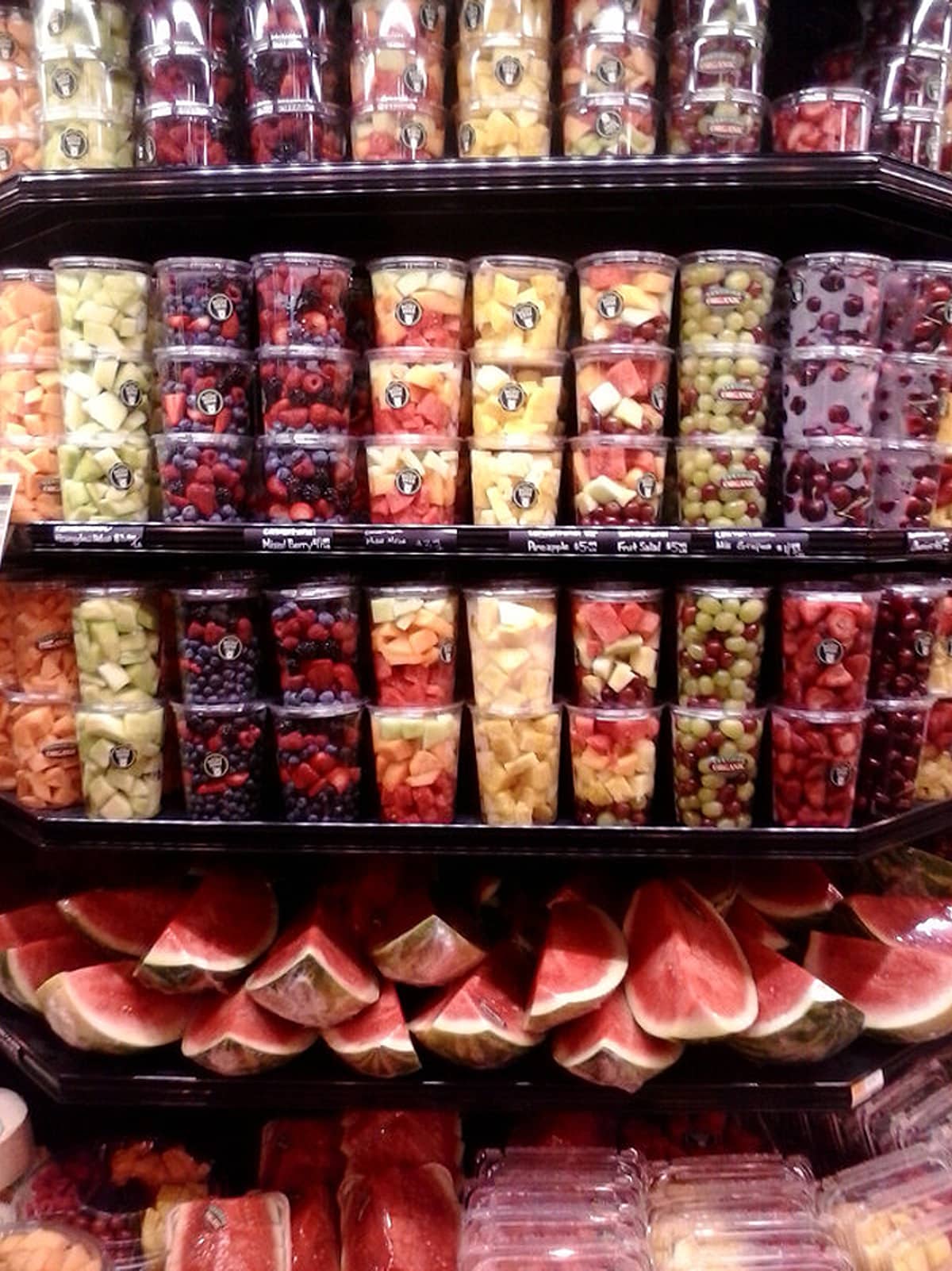
Snack alert! Right when you walk in, you see a display of pre-cut fruit. You'll pay for the convenience, but these make handy snacks to grab in a hurry, especially for busy parents who need something kid-friendly.
The Whole Foods house brand guacamole and salsa pico de gallo are also Paleo-friendly and very convenient!
[one_half]
Guacamole ingredients
- Avocado
- Tomato
- Onion
- Fresh hot chili pepper
- Cilantro
- Fresh lime juice
- Salt
[/one_half]
[one_half_last]
Salsa Pico de Gallo Ingredients
- Tomatoes
- Onions
- Fresh hot chili pepper
- Cilantro
- Lime juice
- Salt
[/one_half_last]
Just beware the other salsas; a lot of them have corn in them!
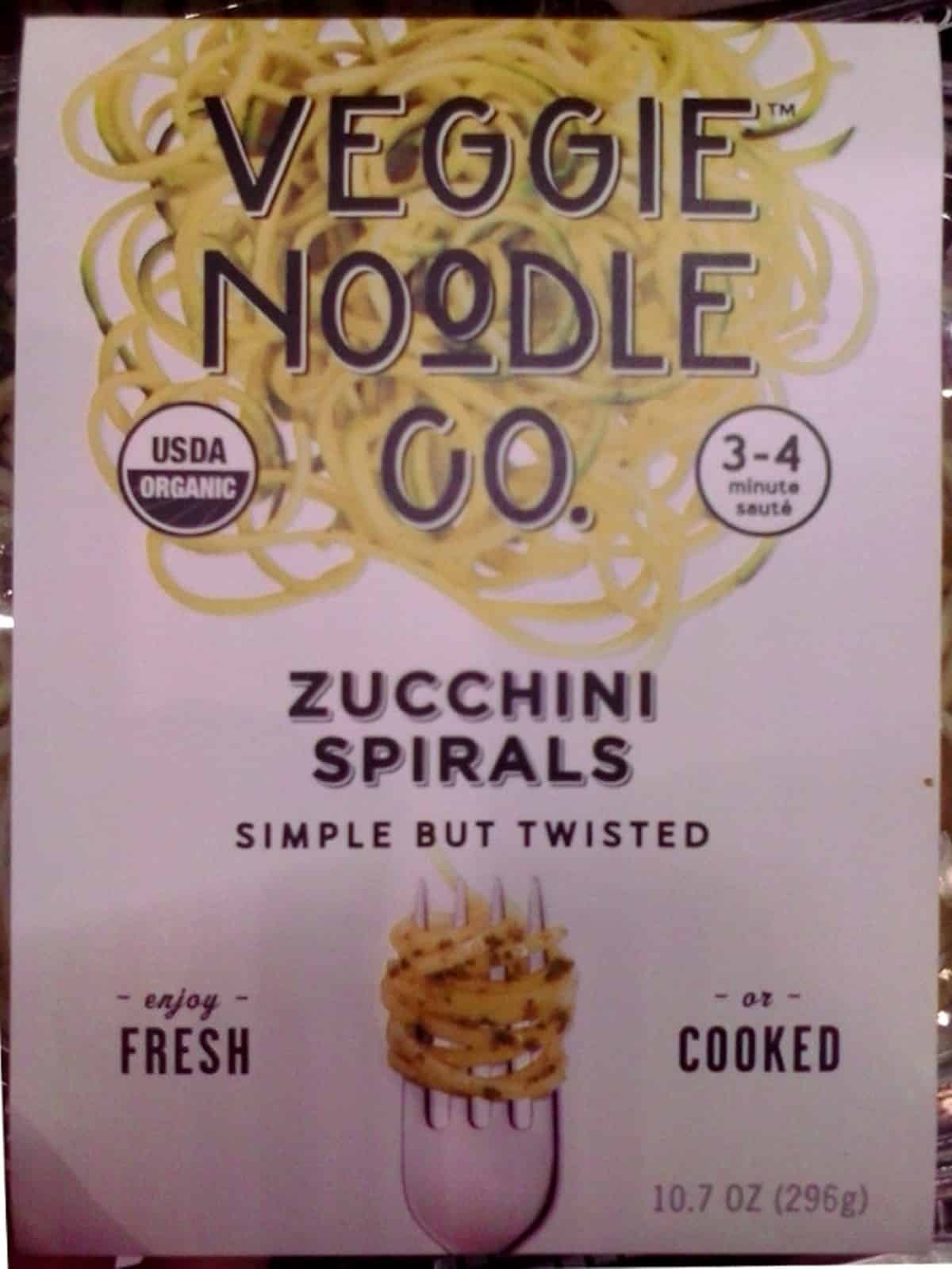
Pre-spiralized zucchini noodles! More convenience food, especially if you don't have a spiralizer. They also have spiralized beets, sweet potatoes, and butternut squash for all your Paleo-noodle needs
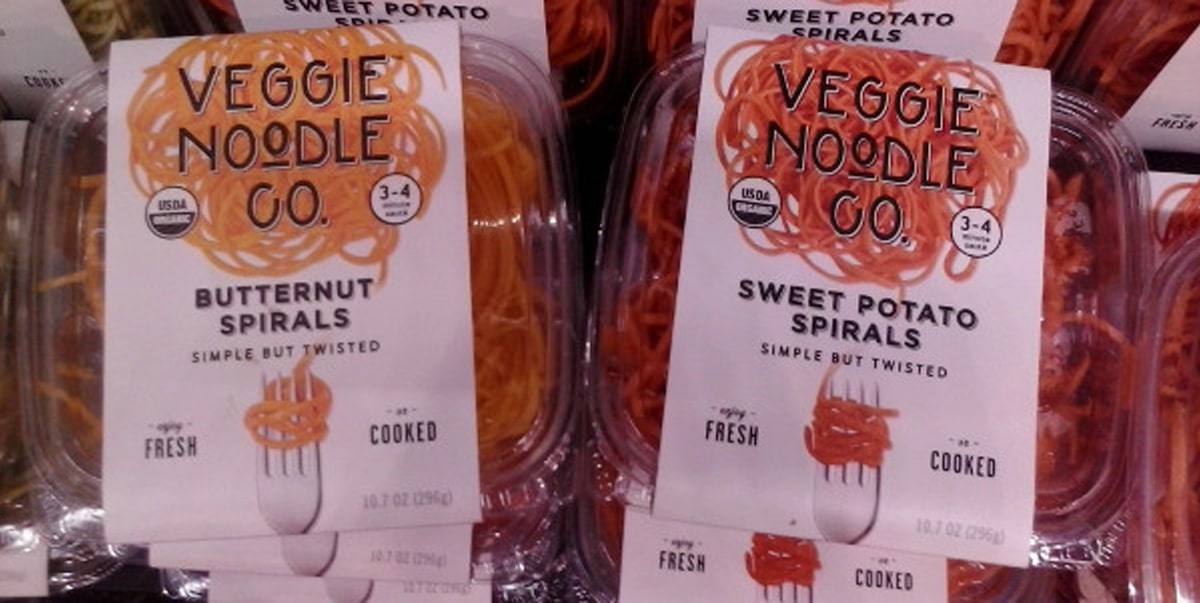
The ingredients list on each package had just one ingredient: whatever the noodles were made of (zucchini, butternut squash, or sweet potato, depending on which type you got). Paleo approved!
More convenience: precut vegetables. Take a look at the bottom row, second from the left - that's jicama. And speaking of convenience...

No time to grate your own cauliflower? No problem! Pre-crumbled cauliflower is perfect for making recipes like this soup.
Unfortunately, now it's time for something a little more negative. These supposedly "healthy" juices...aren't.
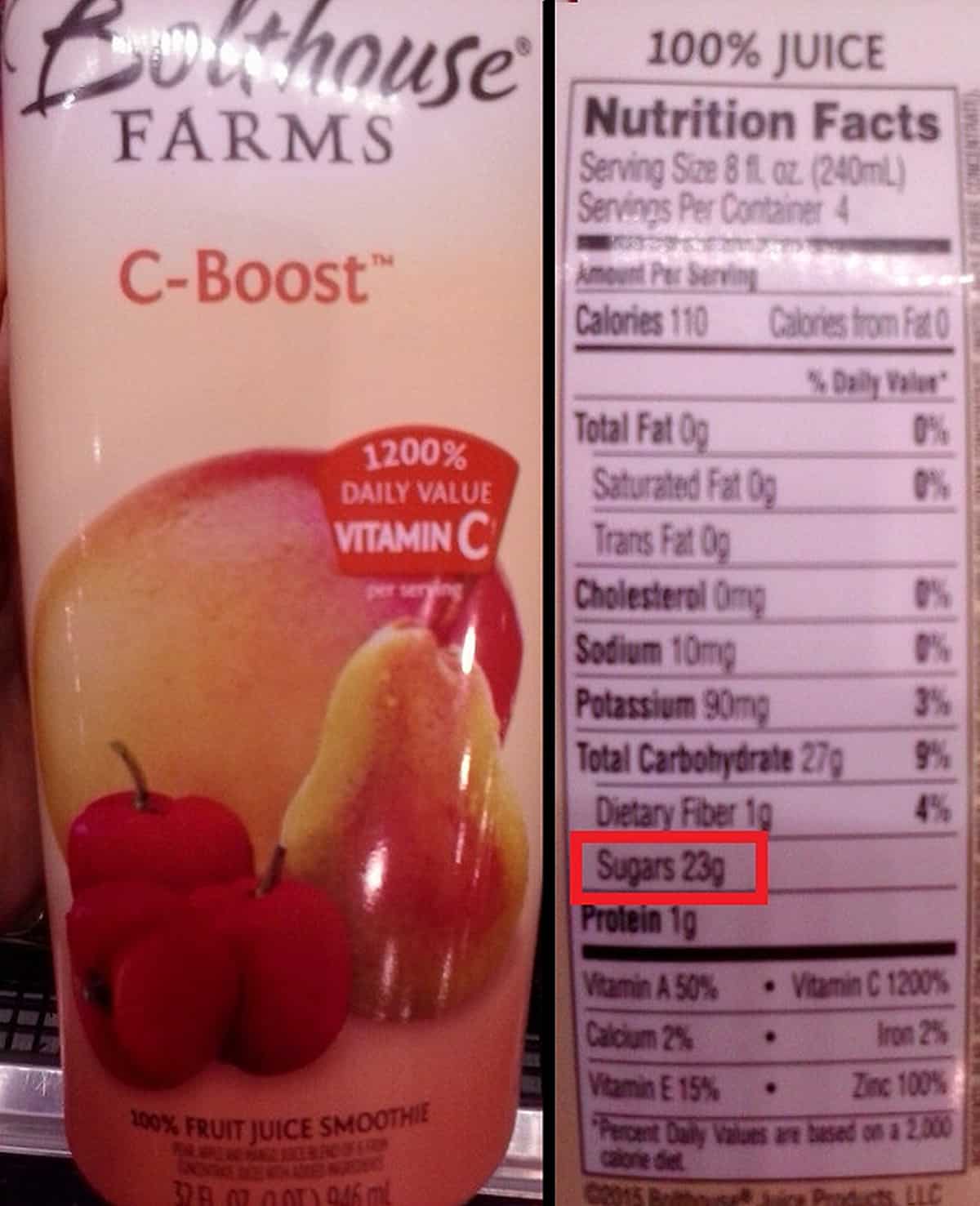
Don't be fooled by all the "100% juice" and "Vitamin C" on the front - take a look at that sugar content on the back. Ouch!
The lesson: not everything in the produce section is healthy.
Part 2: Meat
Moving on to the meat - and again, here we're focusing on things that are specific to Whole Foods. This stuff shouldn't take up the majority of space in the shopping cart.
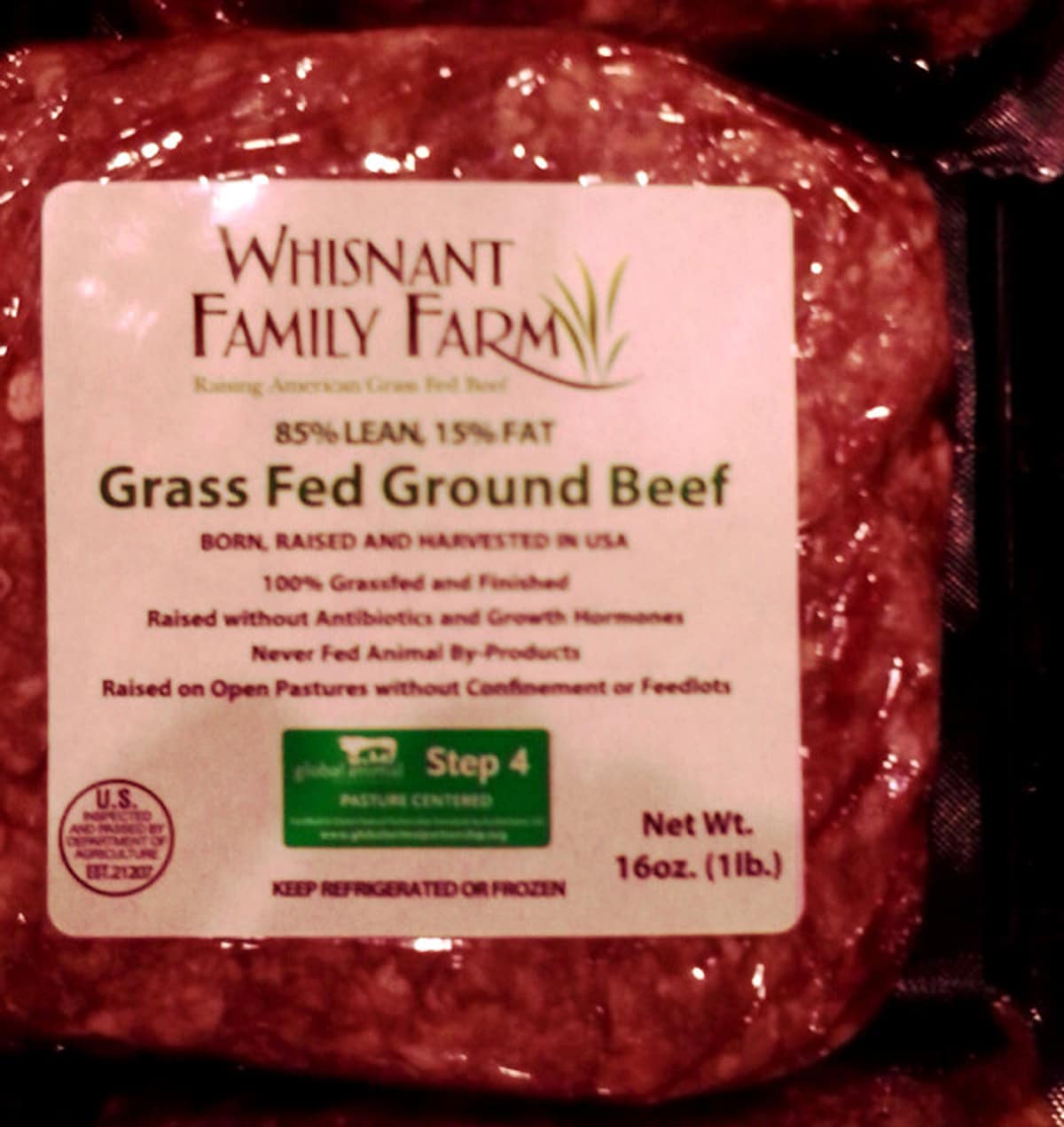
This picture gives you a look at Whole Foods' special system of labeling meat. They have 5 "steps," where Step 1 is the most basic animal welfare provisions and Step 5 means the animals probably lived better than you do. The green sticker on this beef shows that it's Step 4, which is almost at the top. In case you can't read that tiny text, it says:
Step 4
Pasture centered
When living outdoors, chickens and turkeys get to forage, pigs get to wallow and cattle get to roam.
Ideally, look for Step 4 or above to get meat that's really good by Paleo standards.
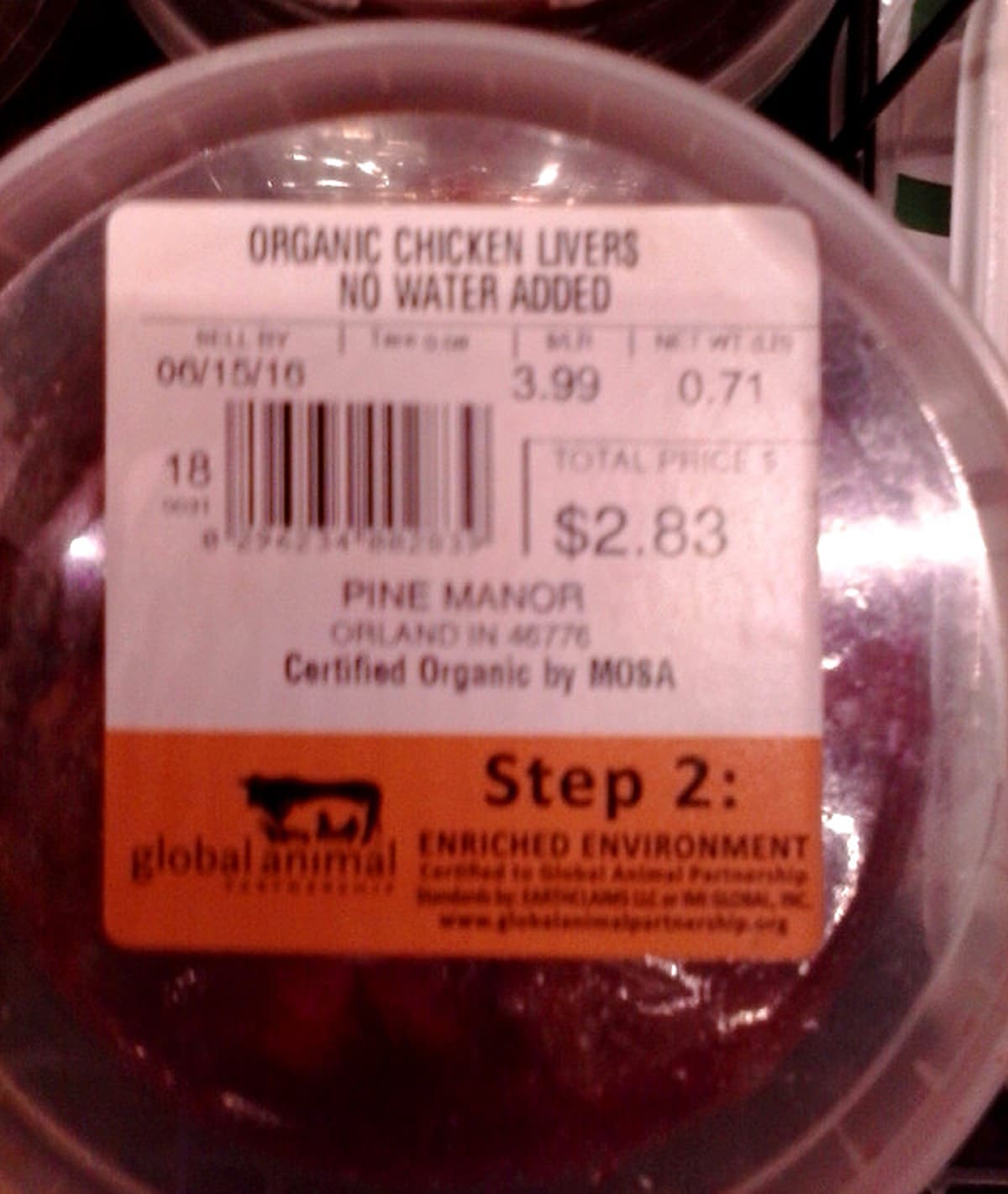
These chicken livers are Step 2, which is still better than nothing!
Whole Foods also has some specialty meats that are pretty tasty, including smoked salmon. But beware what you bring home! Do you know which one of these two packages you should choose, and which one you should avoid?
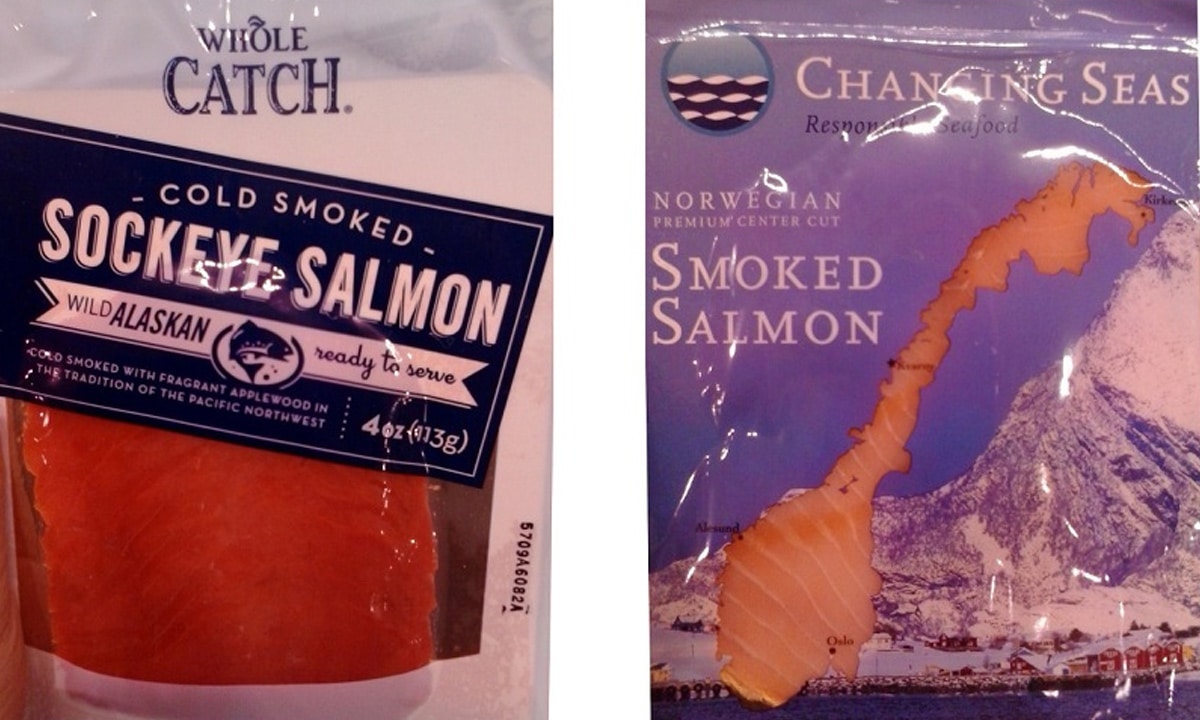
The fish on the left is good to go, but take a pass on the package to the right. Farmed salmon from Norway has very high levels of toxins, and farmed salmon in general is less nutritious than wild-caught. The ingredients on the wild Alaskan salmon all pass the Paleo test: the label reads "sockeye salmon, salt, natural hardwood smoke."
Speaking of cured meat...

Prosciutto made with totally Paleo ingredients: pork, salt, and spices. Dessert, anyone?
Squeezing into the "meat" section even though it's technically in the center aisle is canned fish. Whole Foods has a nice selection of sustainably-caught fish. Some brands of tuna to check out:
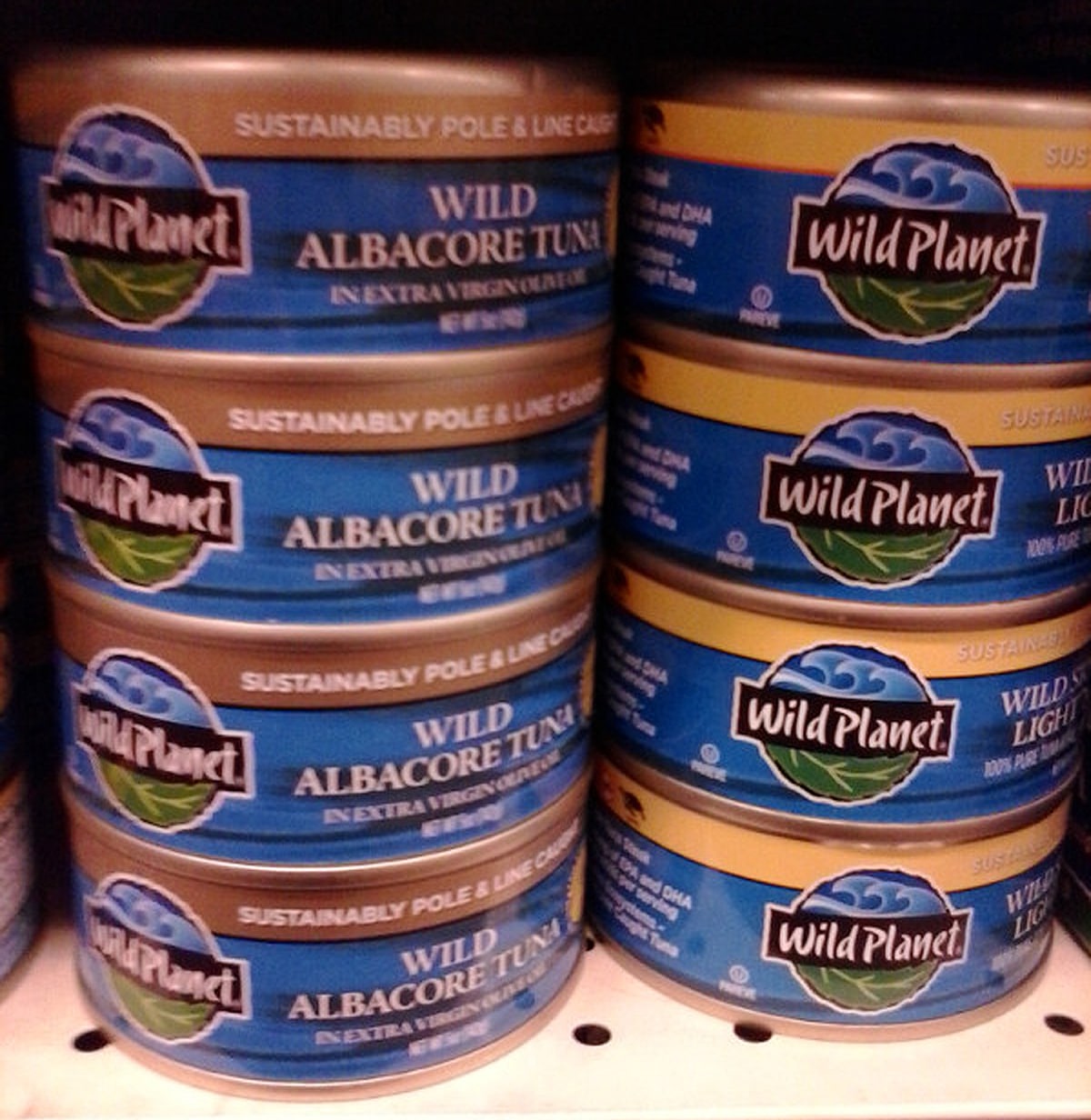
Wild Planet is a favorite, but you do have other options:

See that little blue sticker on the cans to the left, with the white "MSC" and the fish on it? That's the Marine Stewardship Council sticker, and any fish with that sticker is sustainably caught.
Of course, no Paleo review of animal protein would be complete without eggs! You can find eggs at any grocery store, but the special thing about Whole Foods is the selection of cage-free eggs laid by happy chickens. See the green-and-yellow logo on this egg carton? That's the one to look for:
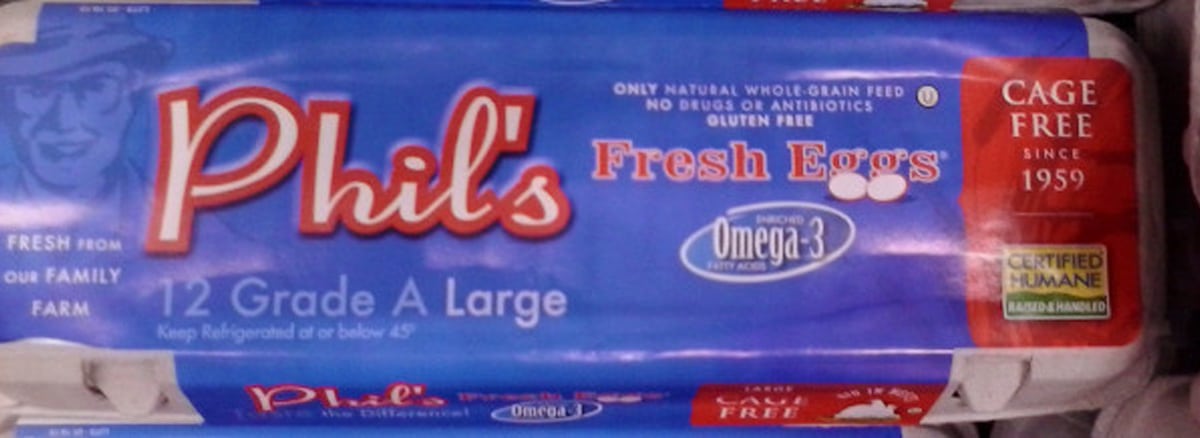
Up close, it says "Certified Humane Raised and Handled." Here it is on a couple other cartons:
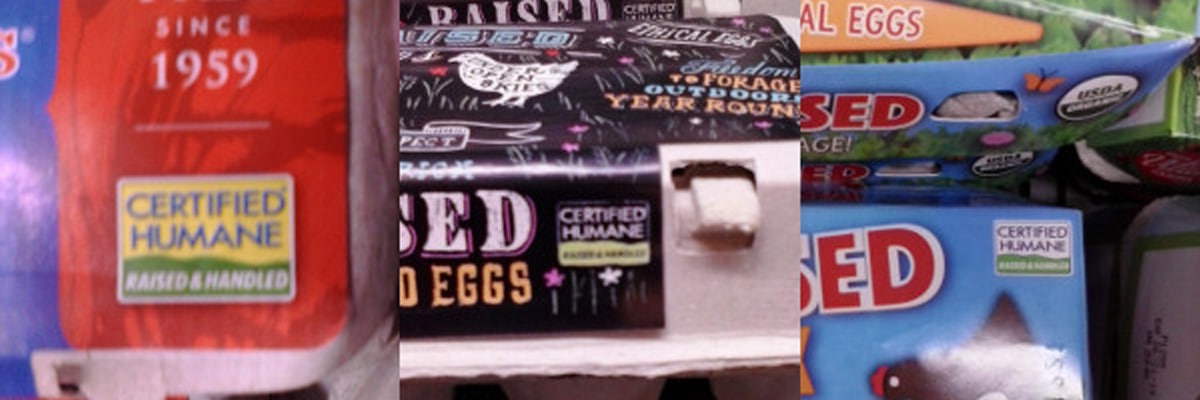
You can see that the colors change, so watch out for the different -colored versions!
Part 3: Protein Powder, Supplements, and Bulk Foods
Who's up for an old-fashioned catch-all category? First up, let's take a look at some of those protein powders. A lot of them were just full of junk and non-Paleo ingredients:
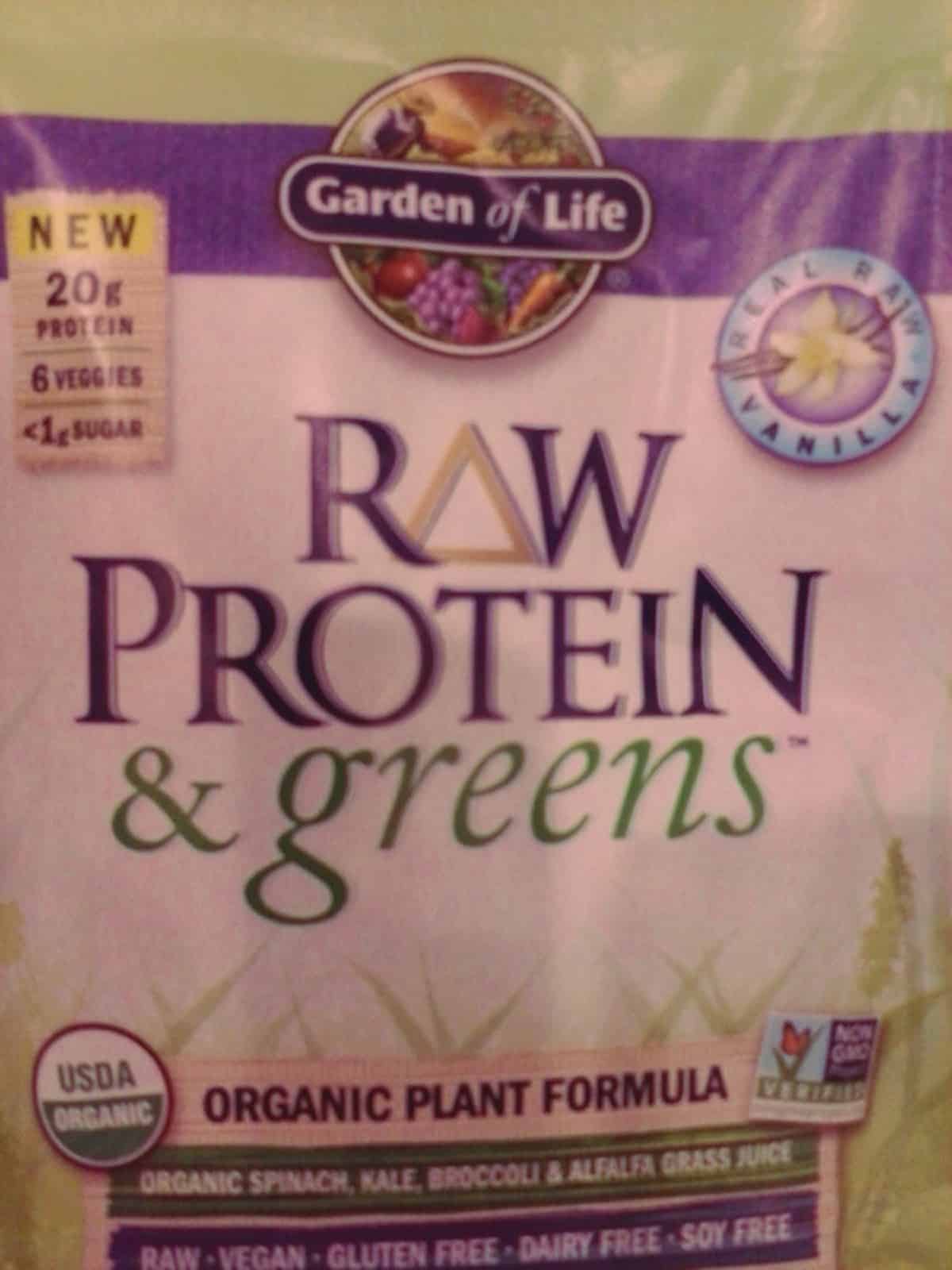
It looks so great until you read the ingredients list. Spinach! Kale! Broccoli! Raw, gluten-free, dairy-free, soy-free, protein AND vegetables? But brown rice, peas, and navy beans aren't Paleo. This is why it's important to read the back of the package.
On the other hand, there was one protein powder that looked more promising, if you absolutely have to have one:
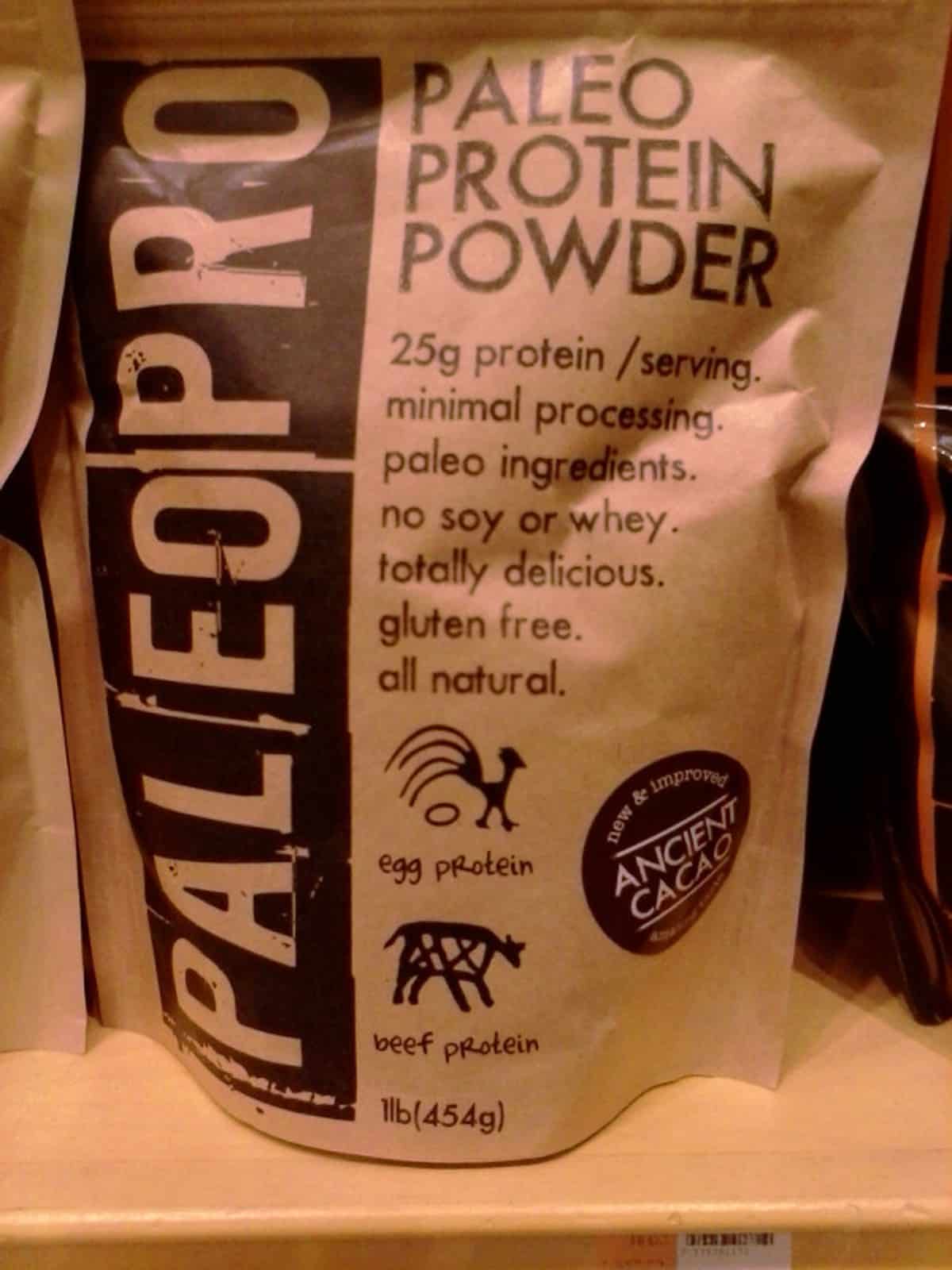
You could do a lot worse, as protein powders go.
The supplement aisle at Whole Foods has a bunch of stuff you can find in other places, but the really great thing about it is this:

Correctly stored probiotics. In a refrigerated case, in opaque bottles and/or boxes to protect them from light. This is how you store probiotics if you want them to still be alive by the time the consumer puts them in her mouth! And their fish oil selection is just as well-treated:
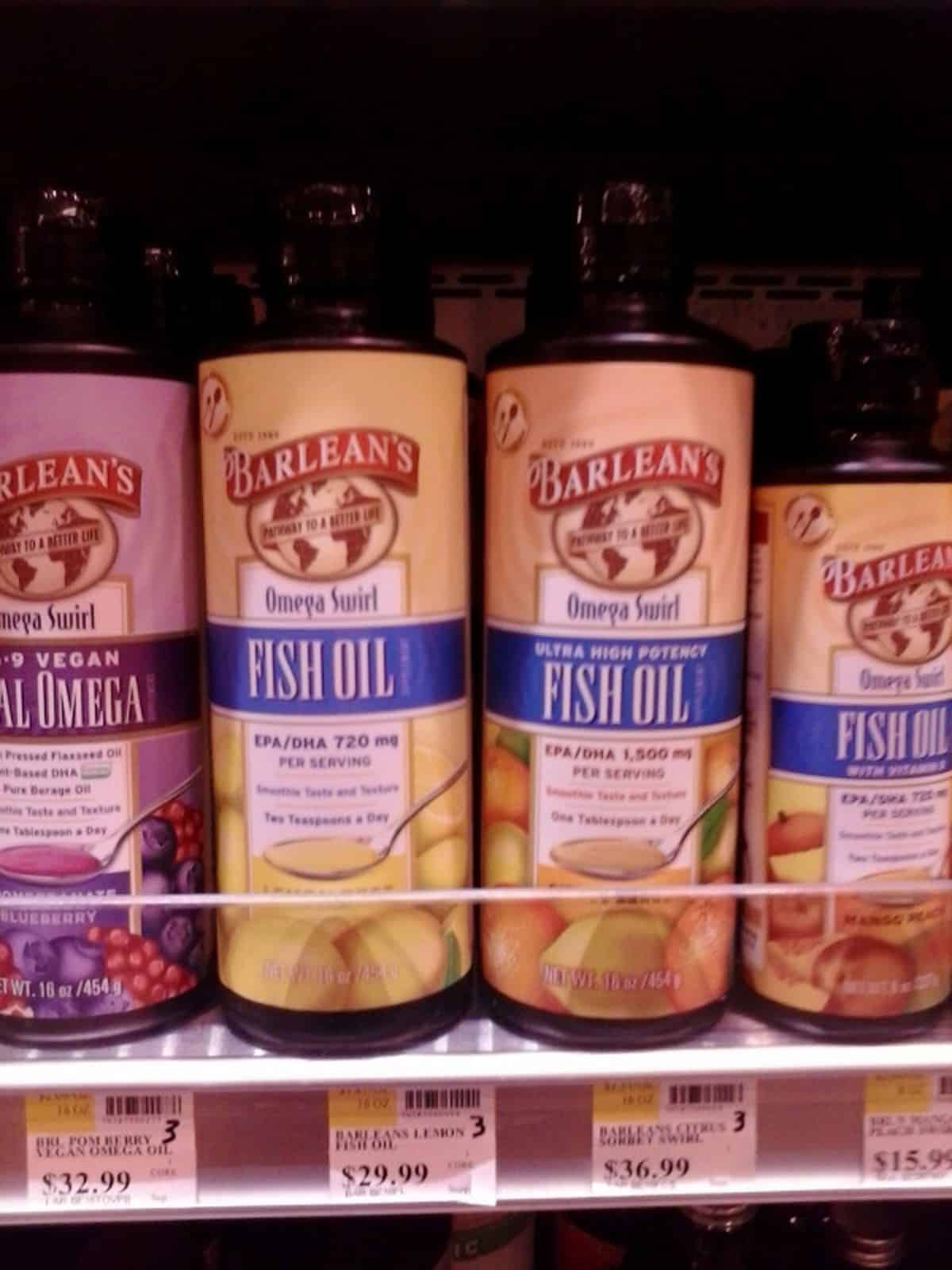
Opaque bottles, and refrigerated. This is how fish oil ought to be stored!
Now for a look at the bulk foods. The bulk foods aisle at Whole Foods is a great place to save on nuts and dried fruit, not to mention spices. But take a look at the picture below. Can you pick out which one of these things is not like the others?

It's the peanuts! They're right in the middle of all the other nuts, but peanuts aren't nuts and they aren't Paleo. So skip that bin, but load up on almonds, pecans, and other nuts.
Beware the trail mix, though:
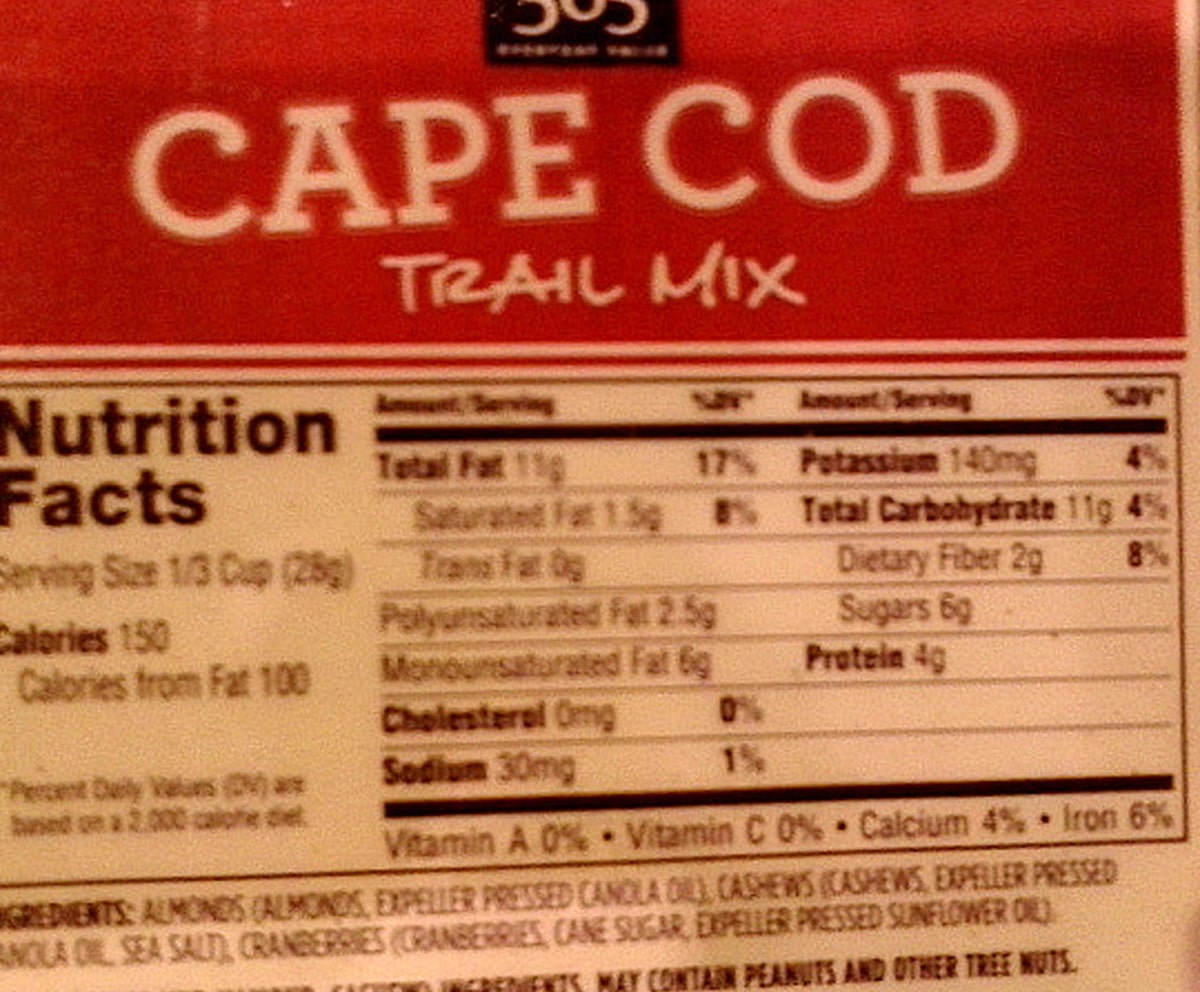
In case you can't read that teeny tiny writing, look at the ingredients: "Almonds (almonds, expeller pressed canola oil), cashews (cashews, expeller pressed canola oil, sea salt), cranberries (cranberries, cane sugar, expeller pressed sunflower oil)." If you just looked at the bin, this trail mix would look fine, but make sure to read the ingredients to catch any hidden junk.
Also in the bulk section...
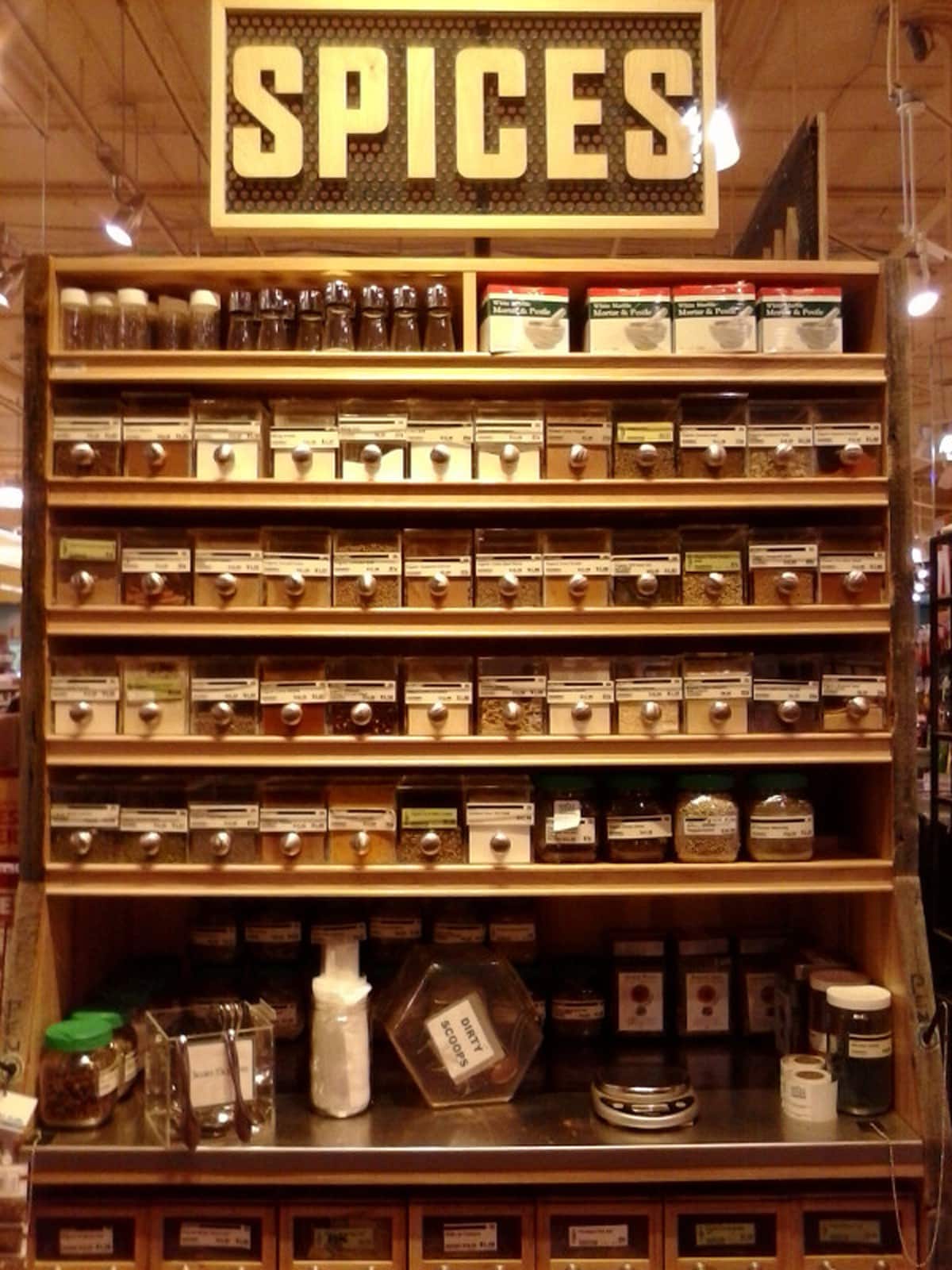
...cheap spices! Bulk spices are much more affordable than the pre-jarred kind.
To round out the bulk offerings, Whole Foods also has a handy grind-your-own almond butter station:

Which comes in handy if you like your almond butter really fresh!
Part 4: The Middle Aisles (Here Be Dragons)
Here be dragons, but here also be some unexpected treasure, so don't shy away too soon!
Let's start with the enormous display of energy bars. An energy bar doesn't count as a "meal" for Paleo purposes - there aren't any vegetables, and there's typically not enough fat. But they can be lifesavers in emergencies, especially if the choice is a Paleo-friendly bar or McDonald's.

Epic bars (on the top two shelves) and Paleo bars (bottom right) are two decent options.
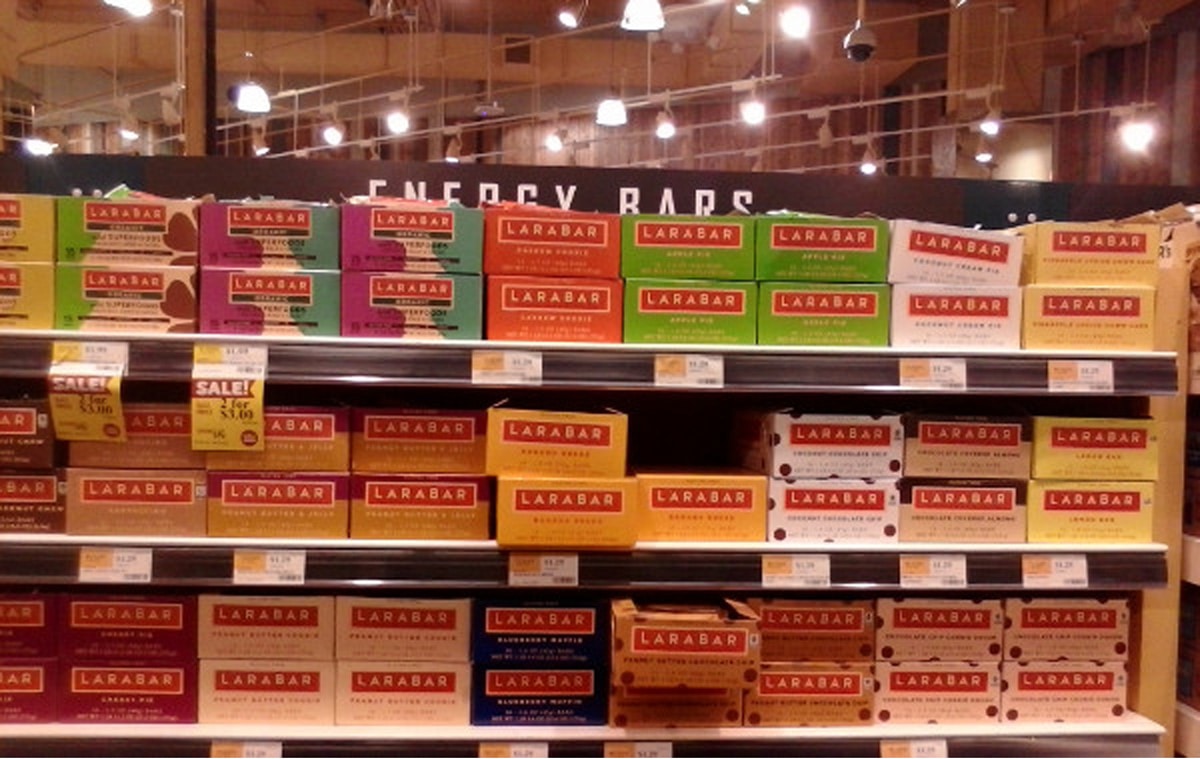
So are some flavors of larabars, but watch out for peanuts! Paleo Leap members can see a full nutritional comparison of dozens of different Paleo-friendly bars here.
Moving on in the "bar" category from "energy" to "chocolate," Whole Foods also carries quite a bit of Paleo-acceptable chocolate. Just like nut butter and other treats, chocolate is a borderline food and a treat - some people might want to avoid it completely. But if chocolate fits into your version of Paleo, Whole Foods is a decent place to get it. Here are three examples of good choices from their selection:
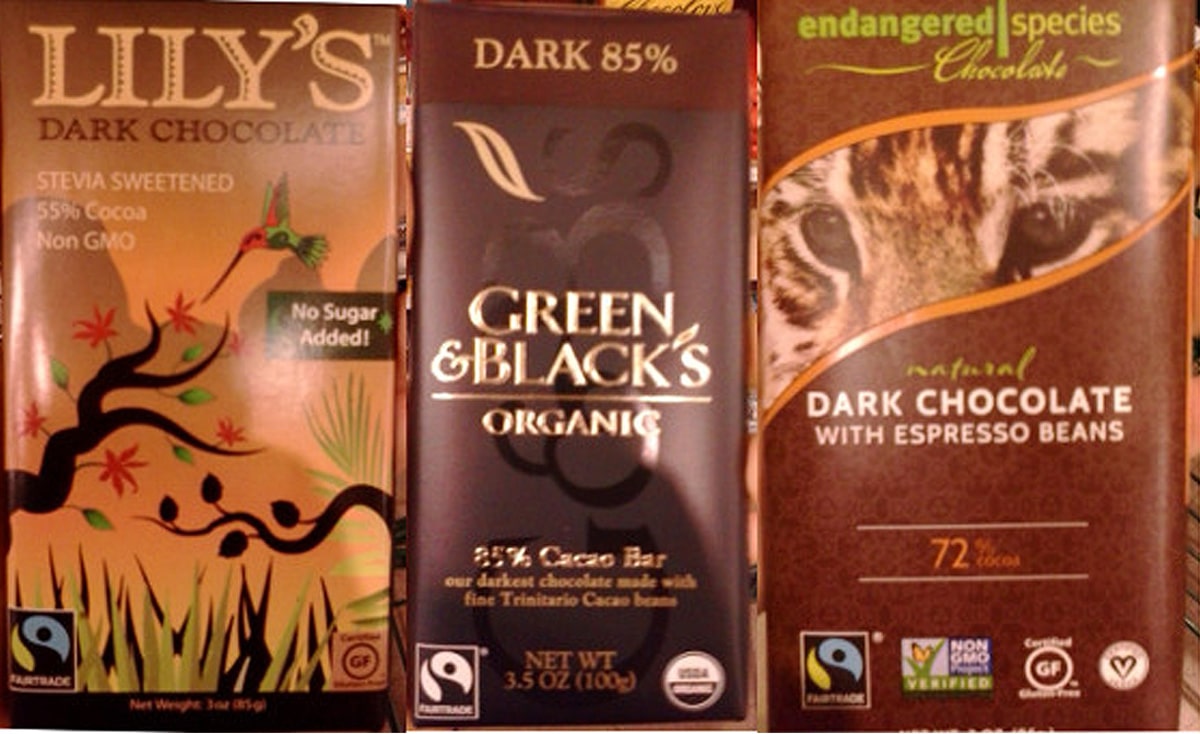
You can see that they're all dark chocolate, which minimizes sugar. And if you look in the bottom left-hand corner of each bar, you'll see the Fair Trade logo - that's important! A lot of cheap chocolate is made by child slaves, which is horrible and not something you want to support. A Fair Trade logo shows that at least the company is trying to avoid that.
Another treat if chocolate isn't really your thing:
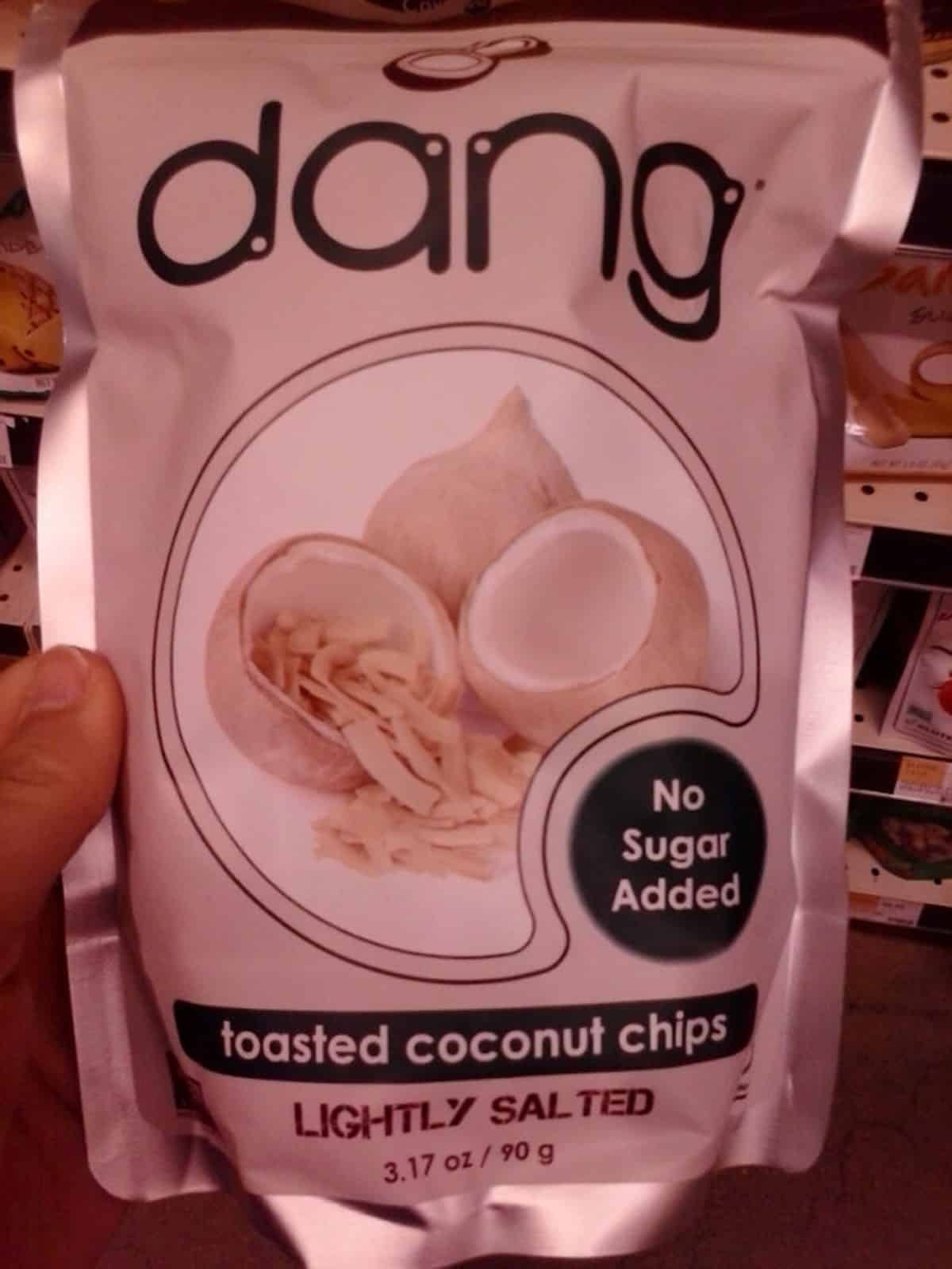
The ingredients are "coconuts, sea salt" - not bad!
There's also a whole shelf of stuff like this:
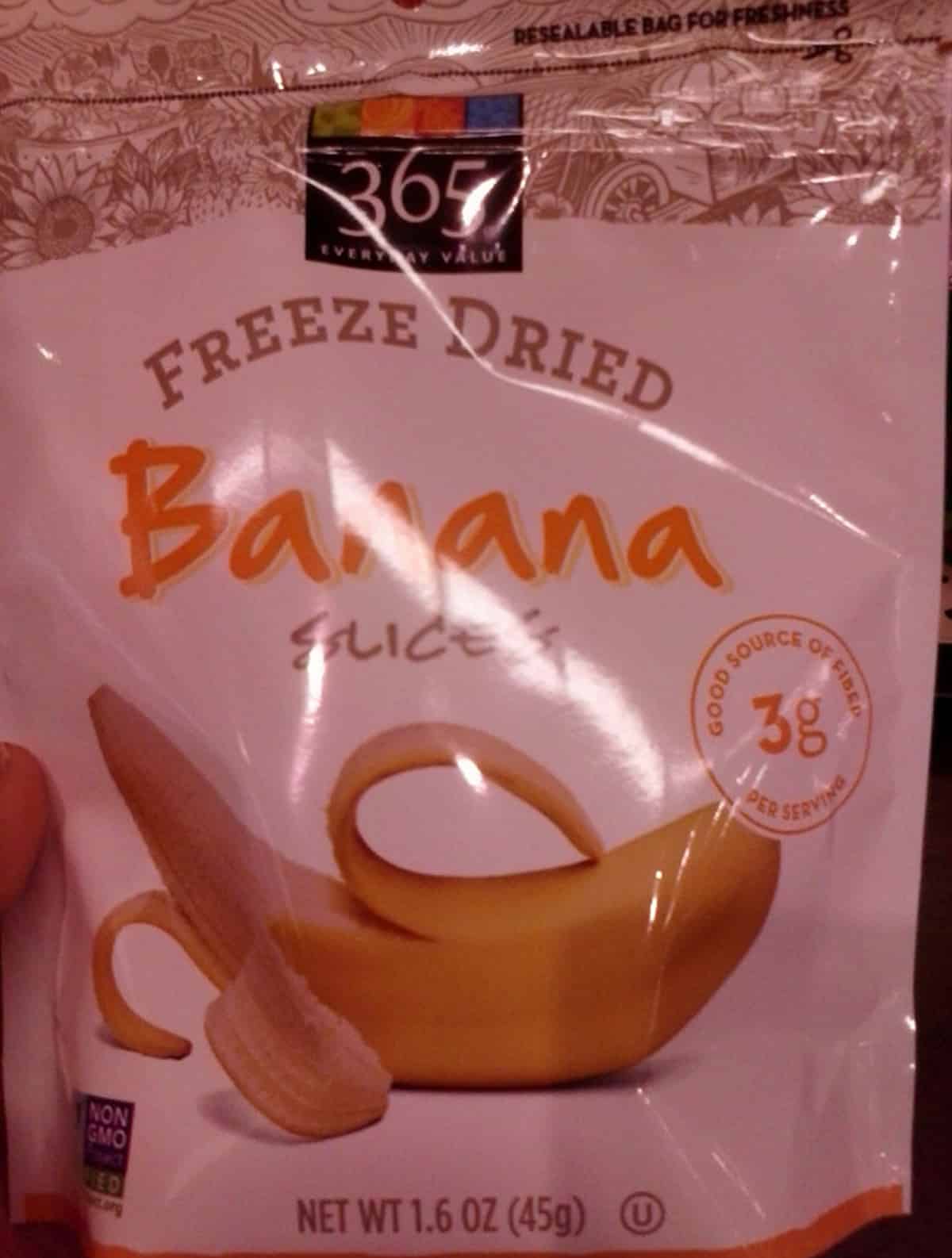
Which looks very virtuous and all because the only ingredient is bananas. But if you look at the back of the package, you'll see huge sugar counts - 24 grams of sugar in one serving, in this case! Dried fruit has a lot of sugar.
Right next to this stuff is an aisle full of chips. Some of them look like they might be Paleo-friendly, but look at the back of the package!
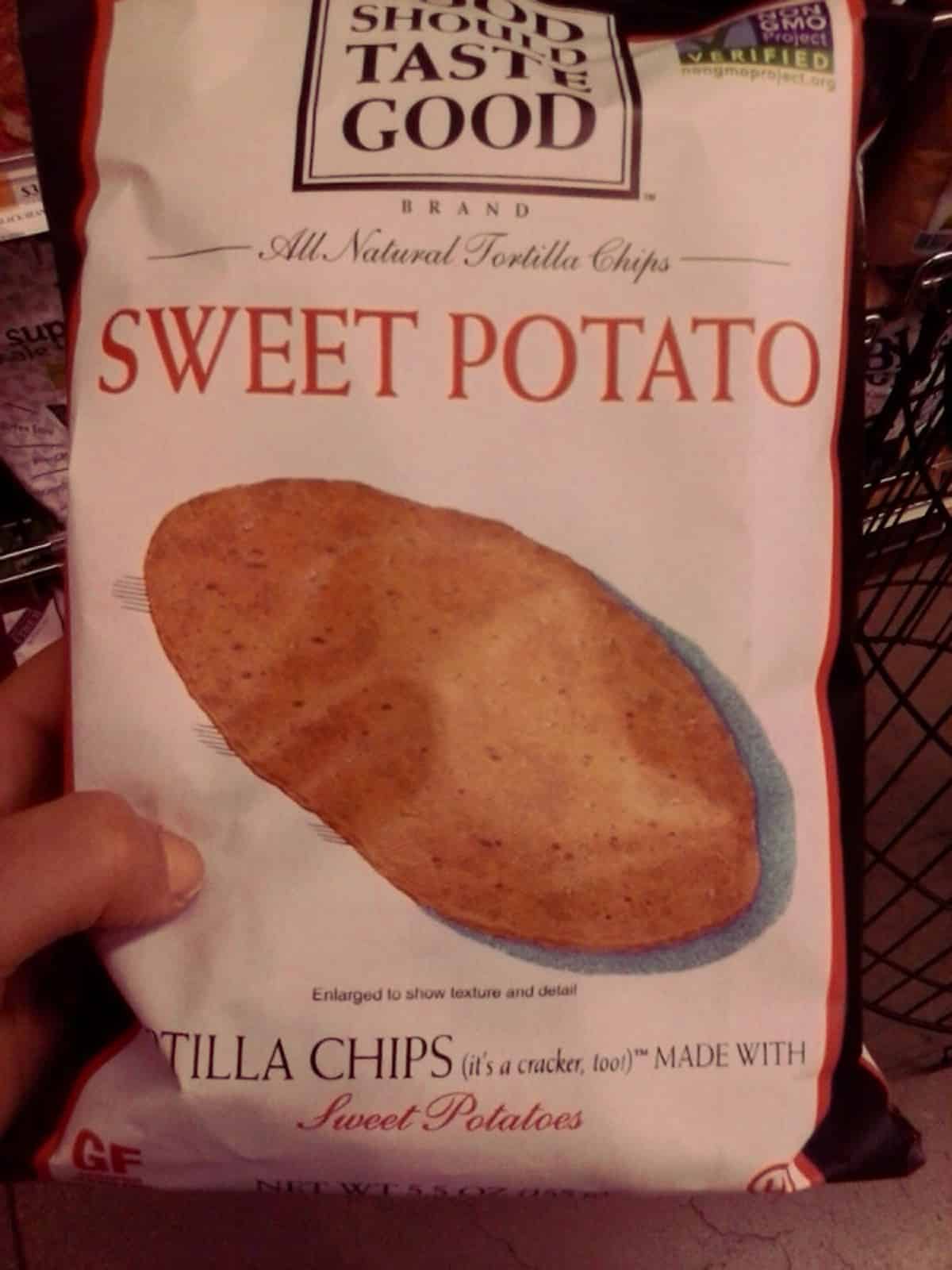
Sweet potatoes? Sweet potatoes are Paleo right?
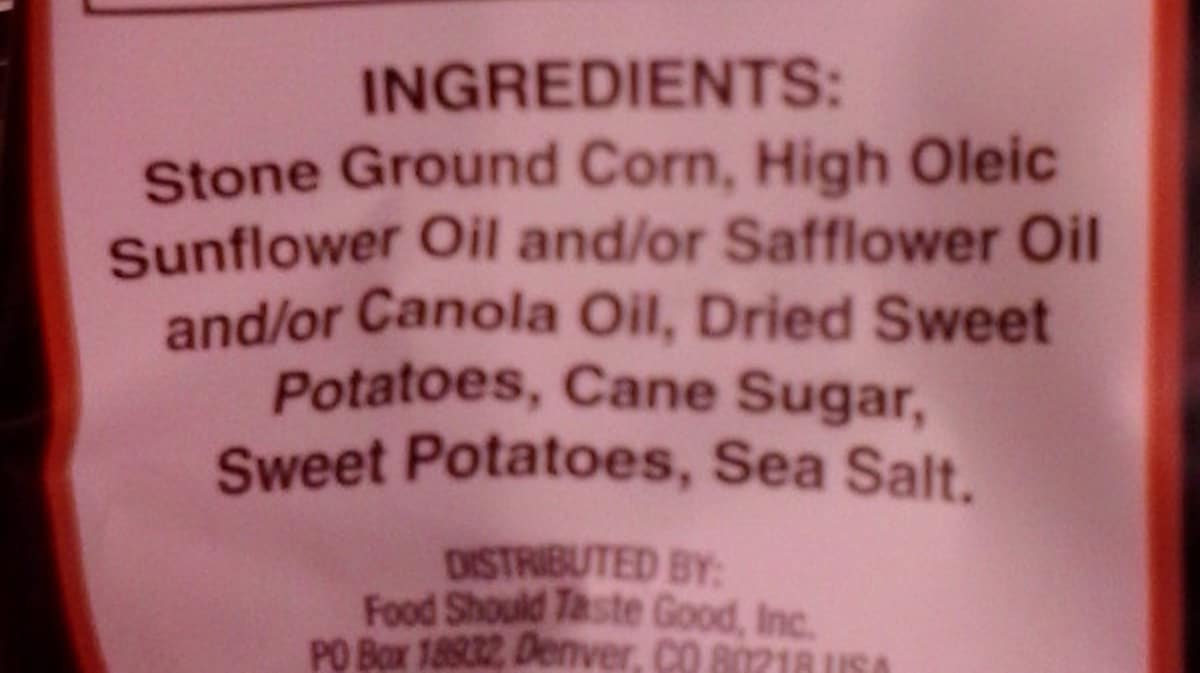
Sure, sweet potatoes are Paleo, but corn, sunflower oil, safflower oil, canola oil, and cane sugar aren't. Pass!
This next bag looks even more promising, because you can see that the "chips" are made of actual sweet potatoes...

But flip it over and you'll see that they're cooked in "expeller pressed canola oil and/or safflower oil and/or sunflower oil" - that's batting three for three on gross industrial seed oils. Pass!
On the other hand, if you eat white potatoes, you actually have some options cooked in coconut oil. Even the mention of white potatoes always stirs up controversy - nobody is saying you have to eat them if you don't tolerate them. People with an autoimmune disorder might need to avoid them, and some people might simply prefer to skip them. But they're not any less nutritious than sweet potatoes, so if you do well with them, there's no nutritional reason to shun them. You can read a full comparison and defense of white potatoes here.
With that said, potato chips shouldn't be a staple in anyone's diet. But if you've got a craving, here are two brands cooked in pure coconut oil:
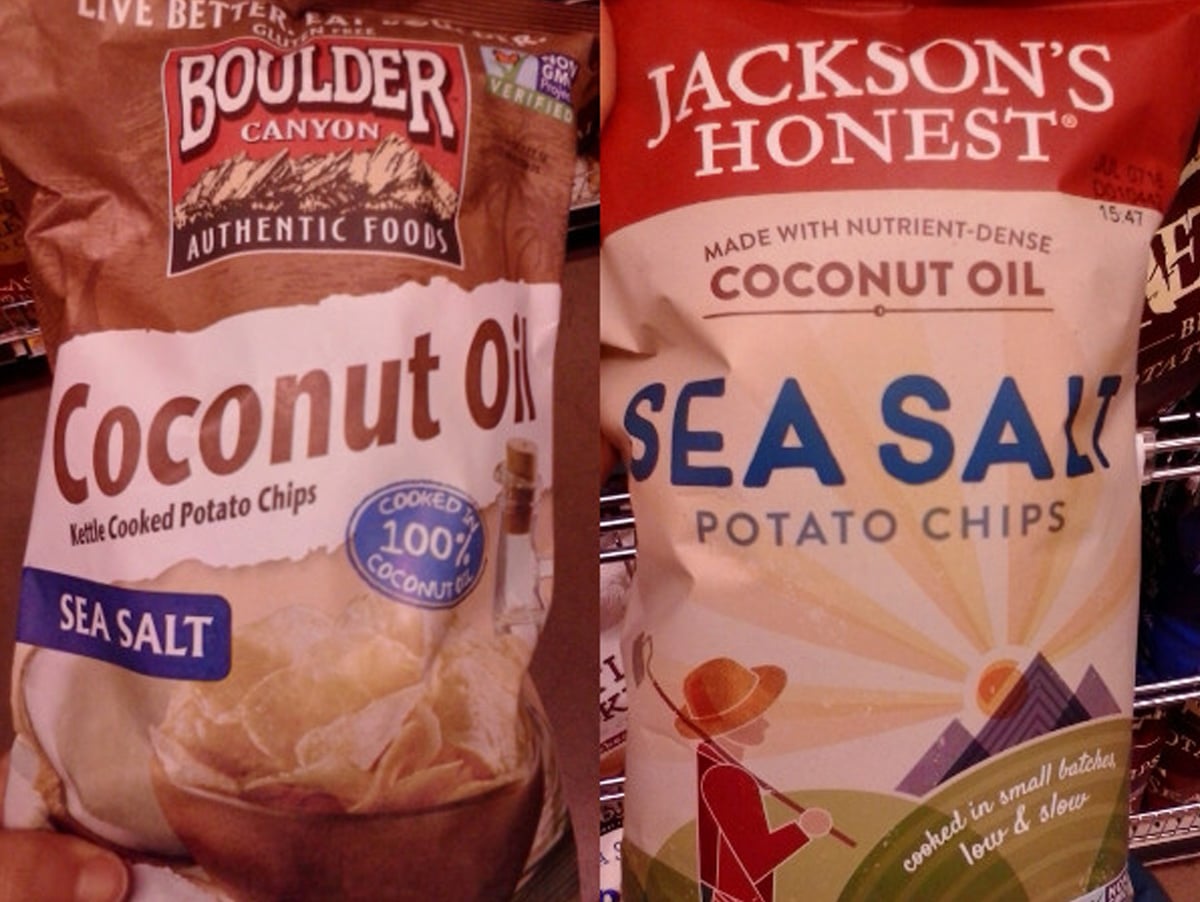
The healthiest food in the world? No. Better than Lays? Definitely.
OK, moving on! Predictably, the breakfast cereal aisle doesn't have a lot of choice, but there is this:
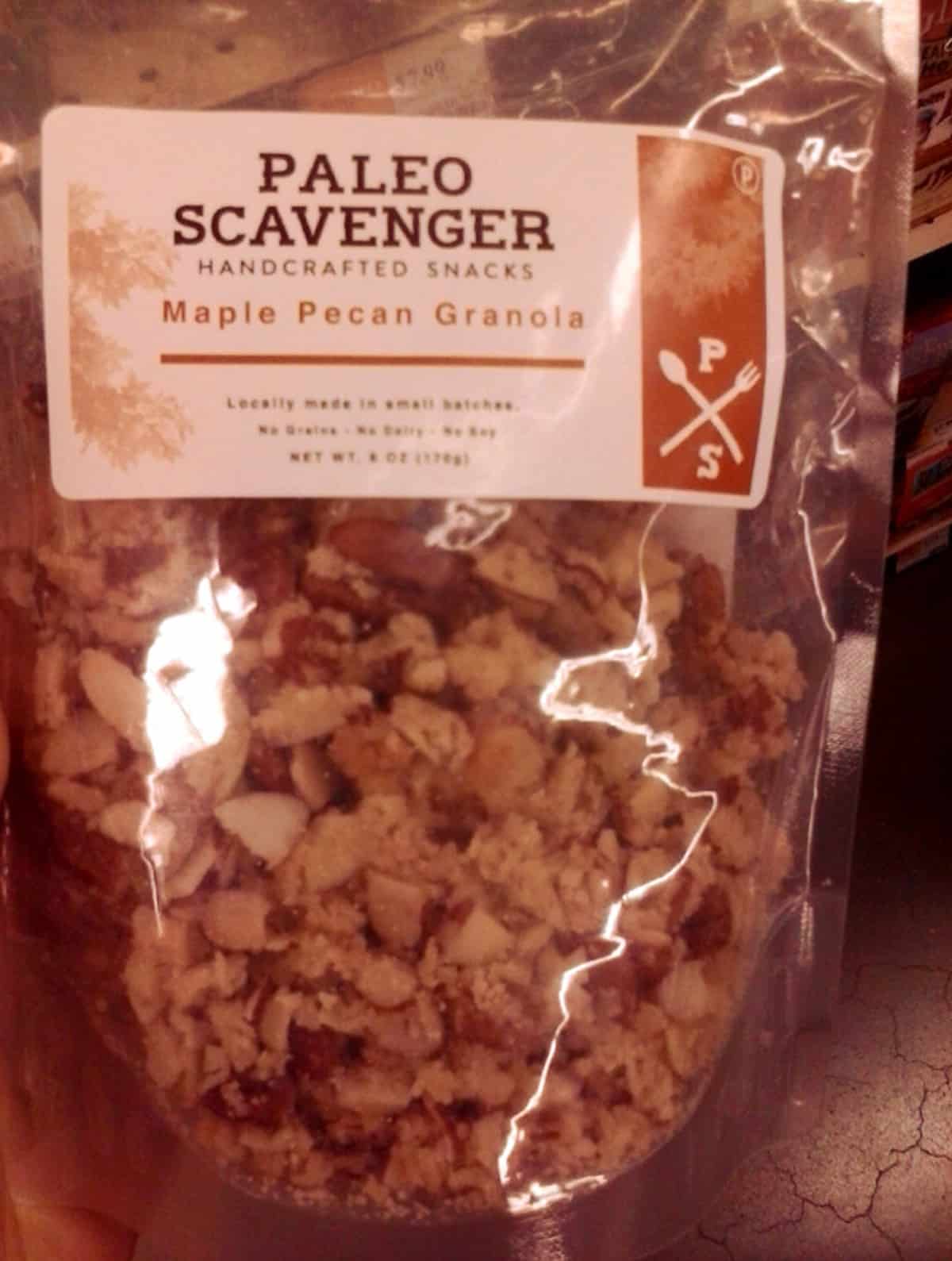
This is a very nut-heavy "granola," and nuts aren't a staple food, so this shouldn't be your breakfast every morning. But as a treat, it's not bad - and it looks pretty tasty!
Further down the aisle, there's all the baking stuff, and you'll find the Bob's Red Mill Display:
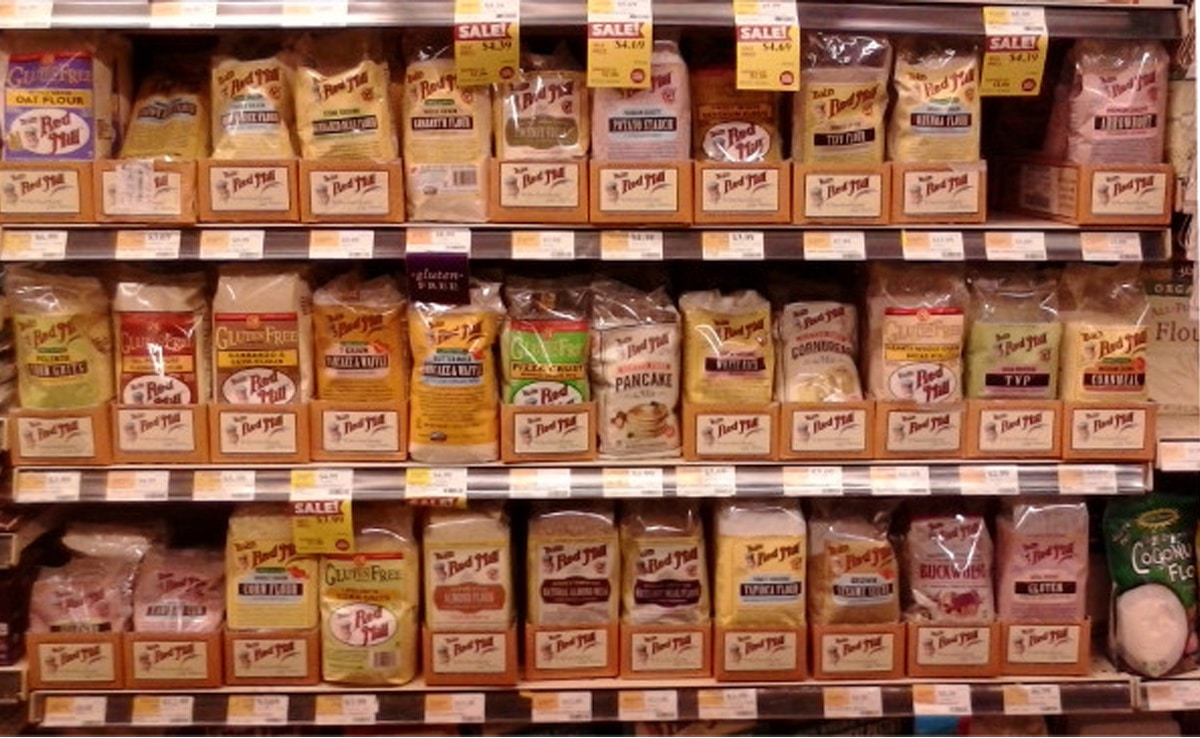
This is grain-free flour central. The labels are too small to read, but there are two different types of almond flour in here, plus tapioca starch and coconut flour. If you're looking for any Paleo baking ingredients, you'll probably make a stop here.
For some weird reason, this is also in the baking aisle:
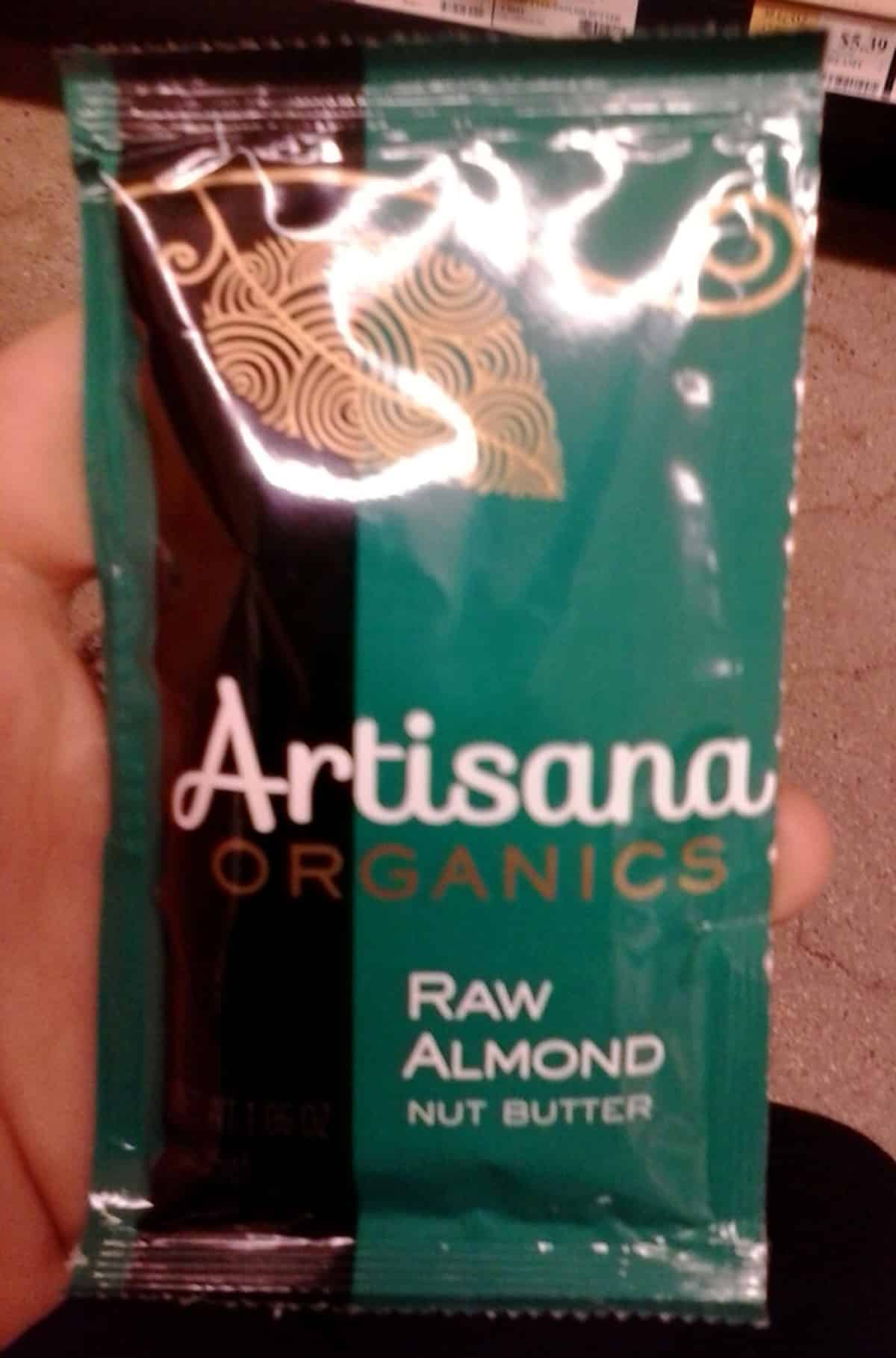
Individual squeeze packs of almond butter. Super convenient for emergency snacks on the go. The ingredients in this one are just "almonds," which is totally fine. But be aware that the Justin's brand often has added junk. That's these guys:
They have a couple different flavors, but just to take one example, the honey flavor has added sugar.
Also in the baking aisle is cocoa powder.

Cocoa powder is full of antioxidants and great for adding some chocolate flavor to your food with total control over the amount of sugar you use. And if you squint on this one, you can see the important fair-trade logo just to the right of the organic logo on the bottom.
Now a detour into the international foods aisle:
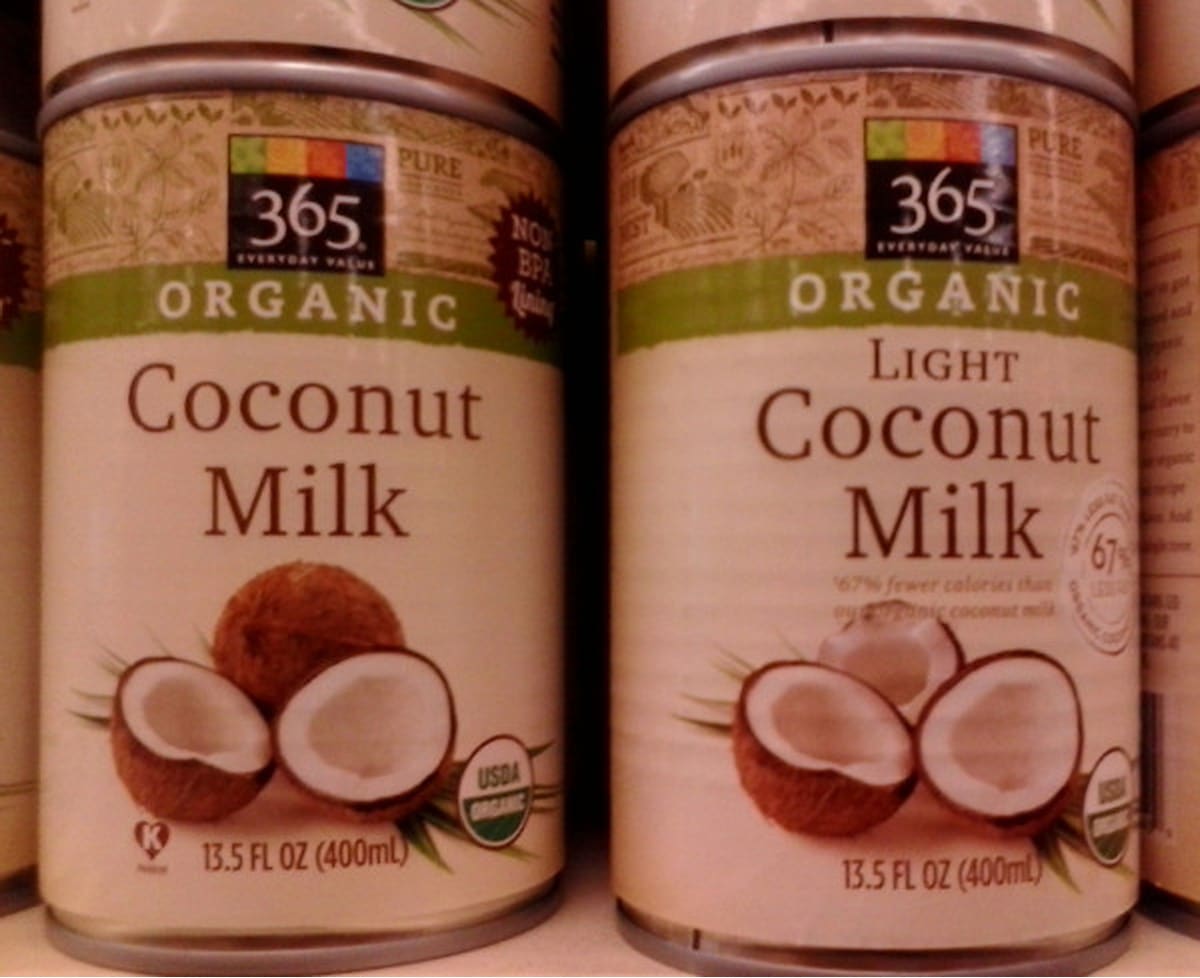
Canned coconut milk is the kind to get - it has fewer preservatives than the shelf-stable boxed kind. Skip the boxes and get it in cans. On the left you can see full-fat coconut milk, which is the type to go for. The light coconut milk on the right is basically diluted full-fat milk for the same price, so you're just getting less food for your money. If you want it diluted, buy the full-fat milk and put some water in it for free at home.
And speaking of coconut products...
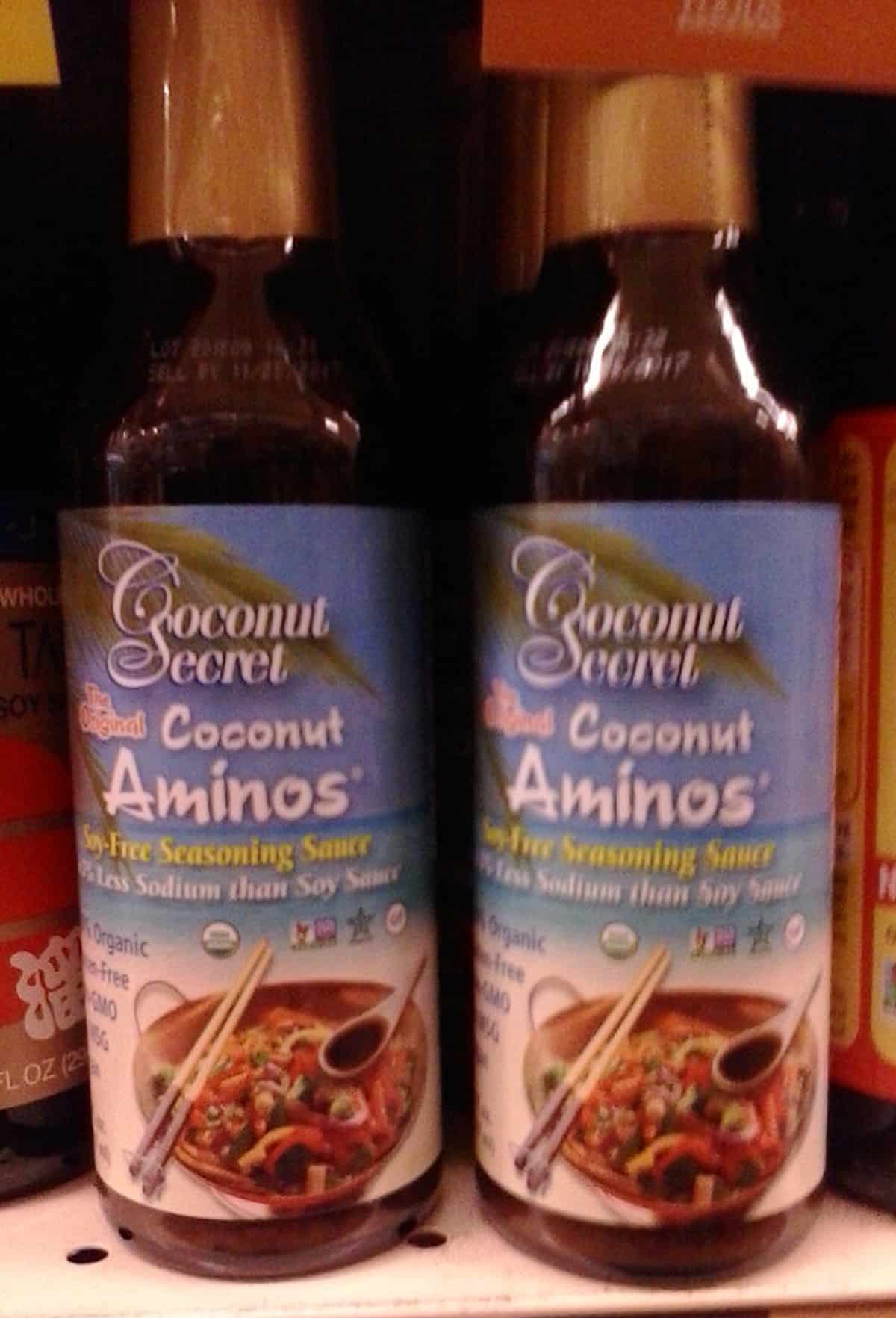
Paleo-friendly "soy sauce," aka coconut aminos.
There's also a whole display of seaweeds:

These are really delicious in broths; just throw them right in the pot to simmer and fish them out when you're done. Seaweed is full of important minerals and other nutrients.
Forging head through a whole aisle of pasta, there's not much here to tempt the Paleo crowd, but there's a selection of junk-free pasta sauces for the days when you might not be up to making your own. Here are three examples of pre-made tomato sauces without any added sugar or gross junk oils. (There are probably more, if you want to go hunting for them)
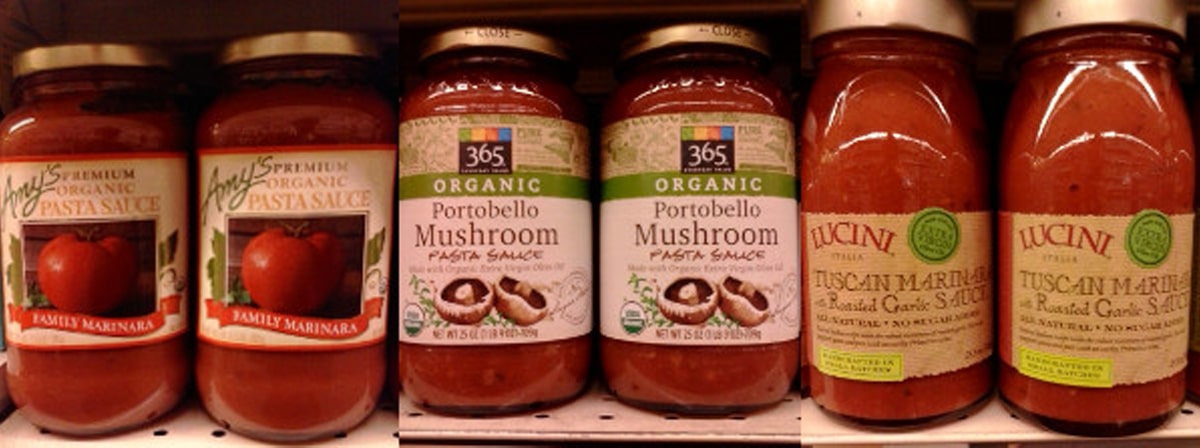
And of course, what would a Paleo shopping trip be without broth? The best way to get bone broth is to make it yourself, but not everyone can manage that. Luckily, there are a few different choices for decent store-bought broth:
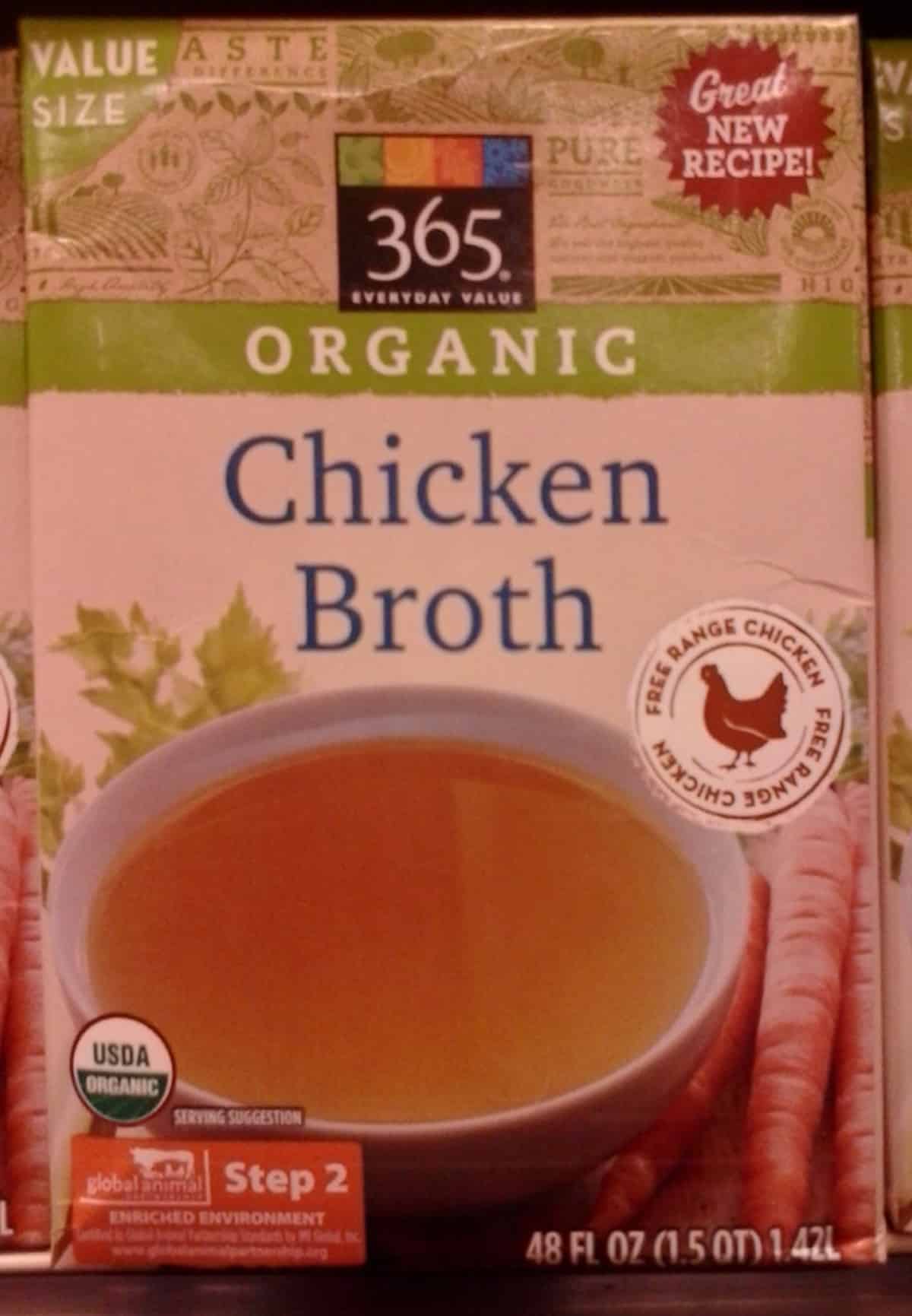
That's for the chicken lovers, and there's also this brand:
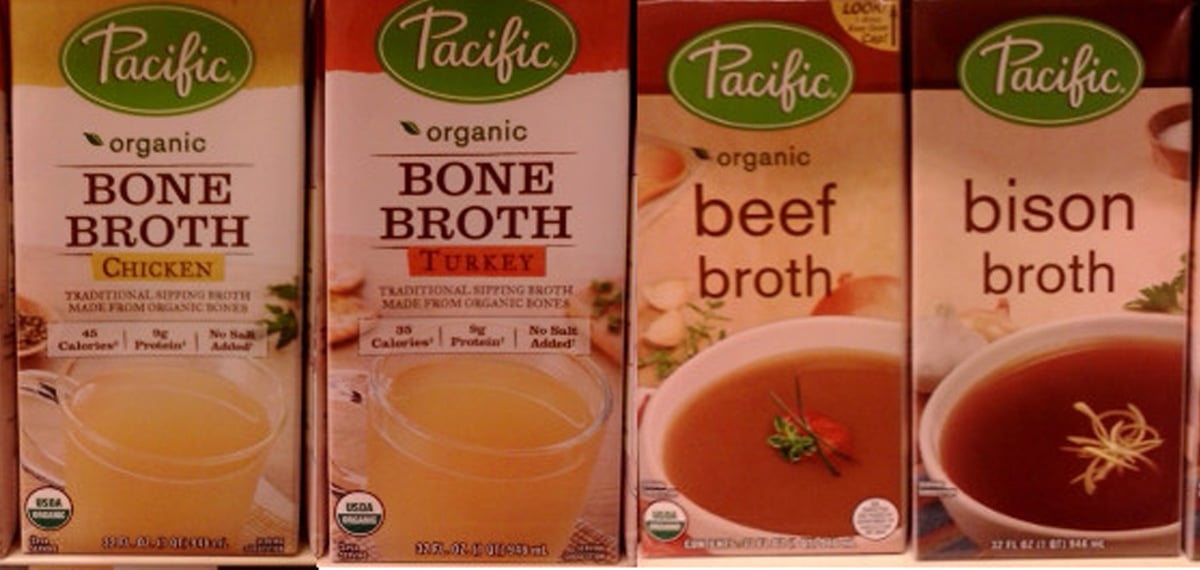
These broths have a minimal amount of preservatives and overall they're pretty good choices.
...And that about wraps it up! Is there a specific category of food that you would have liked to see? Is there another store that you want a walkthrough for? Let us know on Facebook or Twitter!





Leave a Reply